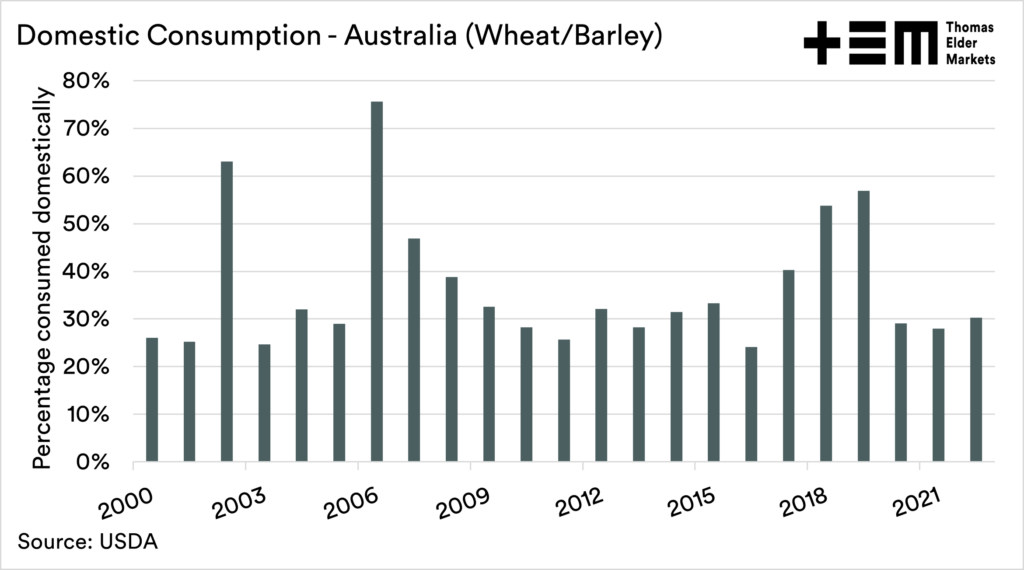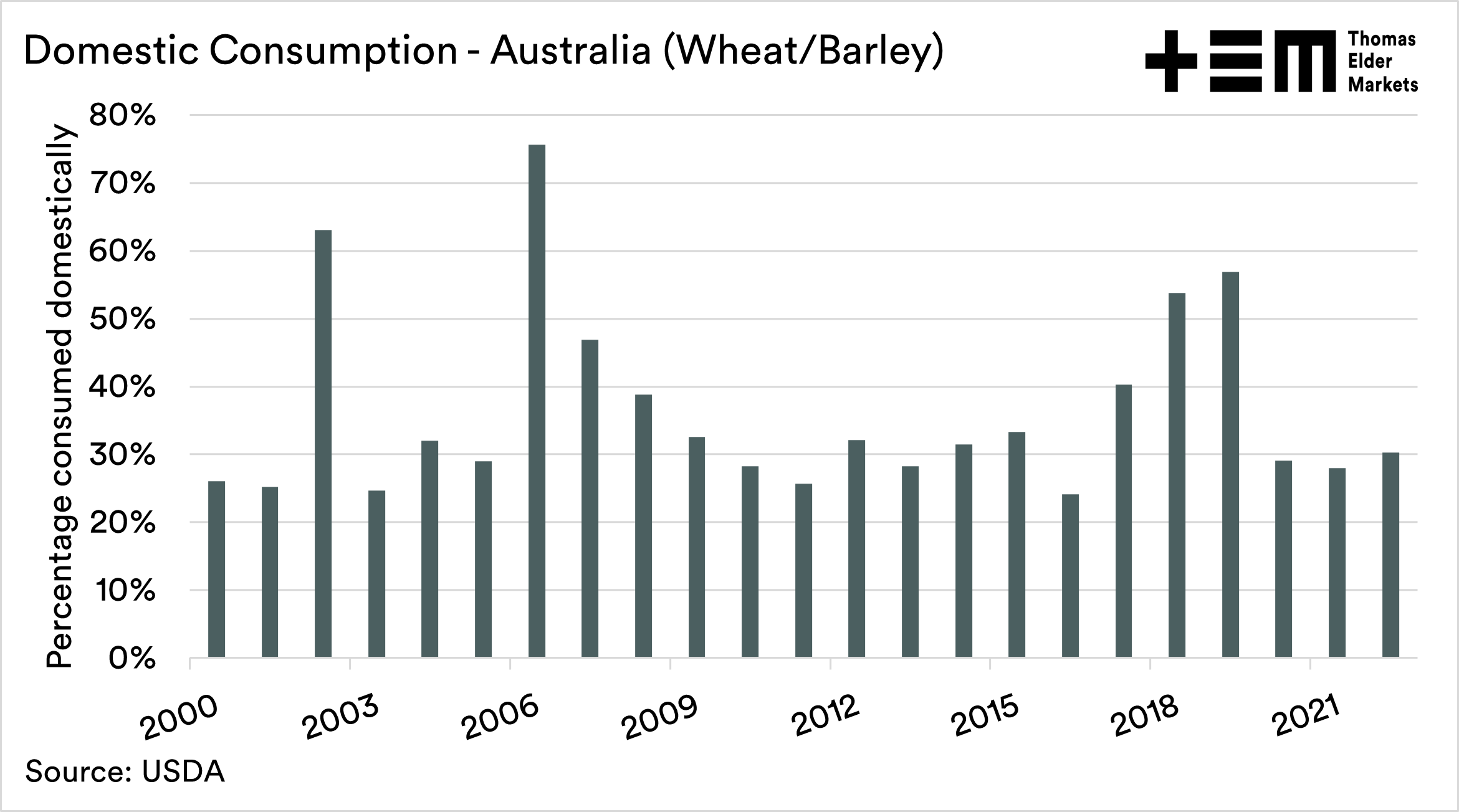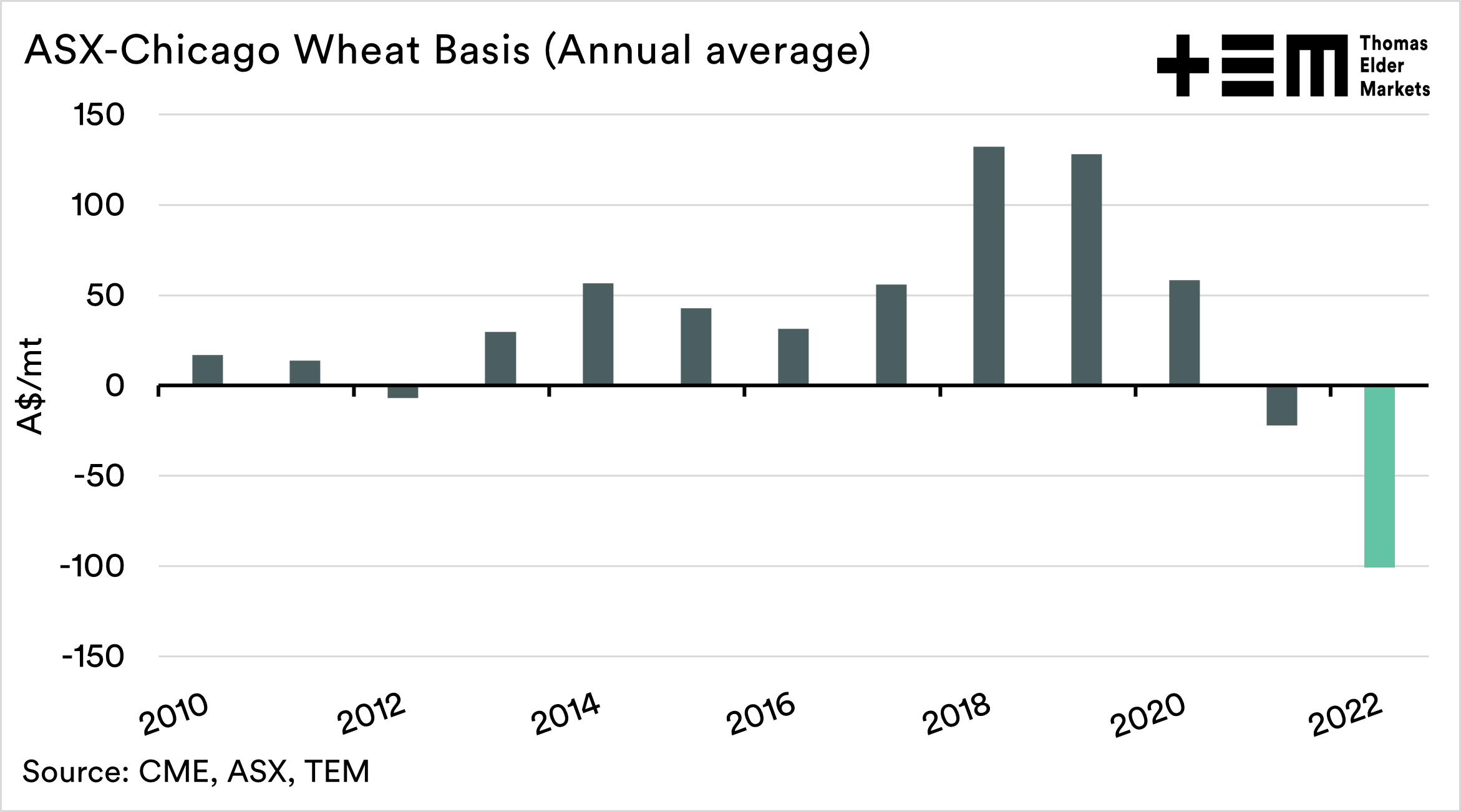The impact of FMD on the grain industry.

The Snapshot
- Clearly, grain can not be impacted directly by FMD.
- There is an indirect impact on grain due to reduced demand in the event of large scale culling.
- The majority of domestic demand is in the eastern states.
- At times, our basis is a factor of domestic demand. If demand was to drop, pricing could come under further pressure.
- The worst scenario for grain farmers would be an FMD outbreak coinciding with a drought.
- During an outbreak, grain logistics would be stretched due to additional controls on movements in the countryside.
The Detail
Last night I wrote a piece on foot and mouth disease (see here), which focused on the impact on livestock industries.
Grain farmers might think the only concern with FMD is what to do when you have filled the account to the brim. As Han Solo said in Star Wars, “Great, kid! Don’t get cocky”.
Grain in Australia isn’t going to be impacted by the actual Foot and Mouth Disease. So how could it be affected?
Firstly, there is demand. In the main, Australia exports the majority of our grains. There is still a significant volume of grain consumed domestically. The chart below shows the percentage of grain consumed locally. We can see periods where domestic consumption increases dramatically (during drought).
In a typical year, Australia is feeding around 10mmt of barley/wheat. A drought increases domestic demand due to the additional consumption by beasts, usually on pasture.
The majority of the inelastic demand is centred around the east coast. This is due to the large concentration of grain consumers. As an example, cattle feedlots (see here) and other intensive industries such as pig and poultry are focused mainly in NSW, VIC and QLD
Let’s say that we had a large scale outbreak of FMD disease, and large scale culling of intensive industries was to occur? The result would be a dramatic reduction in grain demand.
I have run some numbers of the most likely animals to impact upon domestic feed demand. These are beef and pigs and mainly on the east coast. Whilst there are a few sheep feedlots, they are a relatively insignificant proportion of the overall mix.
The total demand for these two industries is approx 5.5 to 5.9mmt. It is important to note that this is now all whole grains; it is also other products (soy/canola meal, palm etc).
The impact of domestic demand can be seen in our basis levels. During periods of drought, we have seen domestic basis increase. I have used the ASX-Chicago spread as a representation of this.
In 2018 and 2019, we saw our price relative to overseas values increase dramatically. This is partly due to domestic consumers paying to keep supplies in the country instead of the export market.
The worst-case scenario would be for an FMD outbreak coinciding with drought. The drought basis helps with some of the effects of lower production through a higher price, although it never completely offsets the yield drop. If a vast cull was to take place, then we could see our domestic basis come under pressure at a time of lower supply.
The impact of FMD on grains shouldn’t be ignored, especially for growers in the eastern states.
Grain flows are another issue. There have been major issues getting grain to port logistics in recent times. In a major outbreak, travel in the countryside would be constrained, especially those in mixed enterprises.
Trucks would have to be thoroughly cleaned between farms, and this would cause significant delays.
Another impact on grain growers is in the hay and fodder sector. FMD can stay on these surfaces for extended periods of time. Therefore we could find additional controls and withholding periods, especially in our markets with more sensitive nations.
So the summary is that FMD would have an enormous impact right through the industry, not just livestock. The only benefit would be to consumers in unaffected regions and industries not under FMD, such as chooks.
Support EP3
Remember to sign up to make sure you don’t miss any of our updates, these are free to access. If you want to support this service, remember to share with your network.






